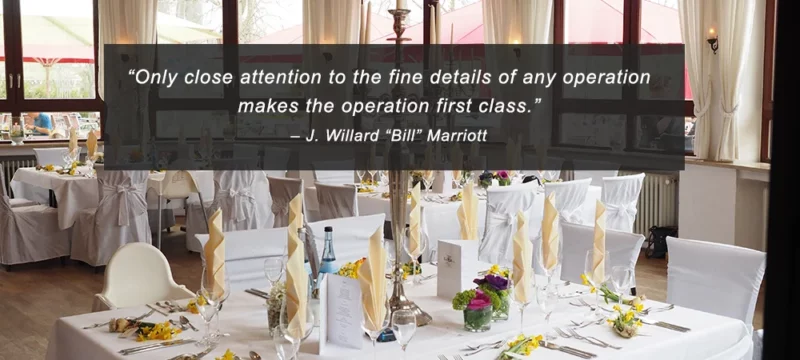
For too long, the debate around hotel distribution has been framed within a deceptively simple equation: place the commission paid to an OTA on one side, measure the acquisition cost of a direct booking on the other, and then declare whichever is lower the winning option. If a marketing campaign produces a cost per acquisition above the sacred 20 percent commission threshold, it is quickly branded as inefficient, a waste of money, an error to be avoided. This binary reasoning, however, is an intellectual shortcut that strips the discussion of its deeper meaning. It overlooks the fundamental truth that the direct channel is not merely another distribution outlet in a portfolio of options, but the sovereign foundation of the hotel itself, the only arena where control over communication, guest data, and the relationship can be fully maintained.
The direct channel is not another distribution outlet in a portfolio of options, but the sovereign foundation of the hotel itself, where control over communication, guest data, and the relationship can be fully maintained.
How much should hoteliers be spending on marketing?
A recent Hospitality Net Viewpoint, How Much Should Hoteliers Be Spending on Marketing?, reignited this conversation and broadened its frame of reference. While contributors expressed diverse opinions, many converged on the recognition that the problem is not merely a comparison between OTA commissions and direct costs, but the very structure and scale of investment. The contrast is striking. Hotels in the United States typically devote less than 2.5 percent of their room revenue to marketing, whereas OTAs operate on an entirely different level of magnitude. In 2024 alone, Expedia allocated nearly seven billion dollars to marketing, more than half of its total revenue. Taken together, the major OTAs invested almost $18 billion in a single year, a figure that dwarfs the combined marketing expenditures of hoteliers worldwide. From this perspective, the old comparison collapses under its own weight. Measuring hotel acquisition spend against OTA commissions is not only misleading, it is fundamentally misguided. OTAs are not service providers but technology companies, and their marketing ratios are by definition incomparable to those of hotels.
Measuring hotel acquisition spend against OTA commissions is not only misleading, it is fundamentally misguided. OTAs are not service providers but technology companies, and their marketing ratios are by definition incomparable to those of hotels.
The benchmark, therefore, lies elsewhere. Hotels should not seek to replicate OTA spending power, a battle already lost, but rather learn to master their own cost of acquisition on their own terms and at their own rhythm. This is where reframing becomes necessary. The direct channel cannot be understood as a cheaper substitute for intermediaries. It is the place where brand identity crystallizes, where guest data accumulates as a strategic asset, and where the fragile alchemy of loyalty can be nurtured over time. Investments in the direct channel must therefore be measured not against the transactional benchmark of OTA commission, but against the strategic imperative of narrative ownership and long-term viability.
Investments in the direct channel must be measured not against the transactional benchmark of OTA commission, but against the strategic imperative of narrative ownership and long-term viability.
Here enters the concept of“Dynamic Budgeting™”. Not as a clever trick to lower ad spend, but as a structural framework to rethink how hotels conceive of visibility itself. Dynamic Budgeting shifts the focus away from an obsession with commission percentages and toward a more flexible, proportional, and lifecycle-sensitive model of investment.
Dynamic Budgeting shifts the focus away from an obsession with commission percentages and toward a more flexible, proportional, and lifecycle-sensitive model of investment.
Why Commission is (always) the Wrong Compass
The fixation on OTA commission as a reference point has produced a dangerous illusion of clarity. It insinuates that distribution costs are linear, universal, and interchangeable (spoiler alert: they are not). A direct booking can never be reduced to the same metric as an intermediated one, even when the immediate cost appears higher. And the reason is simple: a direct booking is not merely a transaction; it is an asset. It comes bundled with data ownership, the potential for lifetime value, the ability to communicate without mediation, and the possibility of weaving loyalty into the fabric of the relationship.
A direct booking is not merely a transaction; it is an asset.
When acquisition is evaluated solely against the 20 percent threshold, hotels risk undervaluing the hidden wealth of the direct ecosystem. A CPA higher than OTA commission can still be not only acceptable but optimal, if the guest it secures returns again, engages with the loyalty program, or becomes a vocal advocate for the brand.
Defining Dynamic Budgeting and the Lifecycle Logic
Dynamic Budgeting reframes this very central question. Instead of asking, “How much should I spend on ads this month?” the hotel begins to ask, “What proportion of each booking am I willing to reinvest in visibility?” This apparently simple shift changes everything. Budgets cease to be rigid, arbitrary, or disconnected from revenue reality. They become elastic, scaling naturally with demand cycles, seasonal fluctuations, and the hotel’s own stage in the market. Dynamic Budgeting is not a one-size-fits-all prescription, and its power lies precisely in its adaptability. A newly opened hotel, for example, can justify acquisition costs of 40 or even 50 percent of each booking, because the priority is not short-term profitability but accelerated visibility and positioning. A mature, well-established property, by contrast, should progressively aim for a leaner structure, exploiting the weight of its reputation to lower direct costs. This lifecycle sensitivity transforms Budgeting from a blunt instrument into a calibrated tool. It acknowledges that visibility does not hold the same value across all contexts. What is unsustainable for a legacy property may be vital for a new entrant.
Visibility does not hold the same value across all contexts.
The systemic dependence on OTAs arises from this asymmetry. OTAs deliver instant, high-volume demand, and for revenue managers under pressure, turning on the “OTA tap” is the easiest way to fill rooms. Yet, like any shortcut, it breeds dependency. The result is a distribution ecosystem addicted to easy visibility, with higher cancellations, outsourced guest relationships, rate leakage, and the gradual erosion of brand identity. Dynamic Budgeting offers an alternative path. It does not seek to abolish intermediaries, who still play a crucial role, but rather to restore strategic agency. If you allow a sport analogy, it is the difference between doping and training: one provides rapid but fragile results, the other builds lasting strength.
Who Owns the Guest?
At the very core of this debate, moreover, lies a deceptively simple question: “Who truly owns the guest?” OTAs present themselves as partners, yet their behavior betrays their true nature. They speak to the traveler as if ownership were theirs alone, shielding them in disputes, nudging them toward alternative choices, curating a relationship that channels loyalty back to the platform rather than to the hotel. Their survival depends on monopolizing the interface where decisions are made. And yet the reality is incontrovertible. It is the hotel that delivers the service, assumes the liability, and ultimately receives the payment. By any rational definition, the guest IS the hotel’s client, not the OTA’s. The OTA is an intermediary, a marketplace of transactions, not the creator of experiences. Guests do not return from a stay proclaiming, “Expedia offered me a great breakfast” or “Booking.com welcomed me with a smile at check-in.” They remember the property, they thank the staff, and they carry the memory of a place and its atmosphere.
By any rational definition, the guest is the hotel’s client, not the OTA’s.
The persistence of the ownership myth reveals something more profound. If a hotel is generic, lacking storytelling and any resonance beyond price, then indeed the distributor owns the customer. Interchangeable products are easily substituted, and loyalty migrates to the shelf rather than the brand. But when a hotel embodies a distinctive narrative and forges bonds that transcend mere transaction, the gravitational field shifts. Loyalty follows the experience, not the platform. As Ellis Connolly would put it, “Loyalty follows the experience, not the platform.”
Loyalty follows the experience, not the platform.
Dynamic Budgeting reframes acquisition costs not as expenses to be minimized but as investments in reclaiming sovereignty. Marketing, technology, and storytelling become tools of reappropriation, means by which the hotel reclaims the relationship that is rightfully its own. A guest may arrive through an OTA, but the hotel can (and should) still transform a booking into belonging. A transaction into an experience. This act of reclamation is the true battleground of hospitality. The future of distribution will not be decided by who controls the click, but by who controls the memory.
The future of distribution will not be decided by who controls the click, but by who controls the memory.
Escaping the Tyranny of Misaligned KPIs
Many hotels exacerbate the problem by adopting KPIs that distort priorities. General managers, eager to boost brand reputation scores, sometimes upgrade OTA guests, inadvertently privileging indirect channels over the direct ones. This is not simply a tactical mistake; it is a strategic contradiction. Dynamic Budgeting demands a new measurement system. Success is not solely about occupancy, nor ADR in isolation, but rather the sustainability of the visibility mix, the robustness of the direct channel, and the long-term value of cultivated relationships. Dynamic Budgeting also requires a new lens on the guest journey itself. Hospitality is not retail. It is not a linear funnel from impression to purchase. It is a fragmented, multi-touch process where a traveler may first land on an OTA, validate through TripAdvisor, and only then complete the booking on the brand website.
Hospitality is not retail. It is not a linear funnel from impression to purchase. It is a fragmented, multi-touch process where a traveler may first land on an OTA, validate through TripAdvisor, and only then complete the booking on the brand website.
The task of the hotel is not to demonize these touchpoints but to orchestrate them, investing proportionally, strategically, and dynamically in visibility across the journey.
A New Paradigm for the Post-Parity Era
Dynamic Budgeting is not a cosmetic adjustment to revenue management; it is a structural rethinking of distribution economics. It rejects the tyranny of static budgets, the false simplicity of commission comparisons, and the passivity of OTA dependency. Instead, it proposes a new grammar of investment, one that adapts to lifecycle stages, prioritizes guest ownership, and reframes visibility as an asset rather than an expense. It acknowledges that sometimes the correct CPA will exceed OTA commission, and that this is not inefficiency, but strategy.
Sometimes the correct CPA will exceed OTA commission, and that this is not inefficiency, but strategy.
Dynamic Budgeting offers precisely that: a system in motion, continuously recalibrated, where visibility is no longer bought at the cheapest rate but cultivated as the foundation of long-term sovereignty. Dynamic Budgeting is not simply a framework; it is a call to courage. The courage to see beyond the false clarity of commission thresholds, to embrace investment as strategy, and to reclaim the guest not just for a night…
… but for a lifetime.









